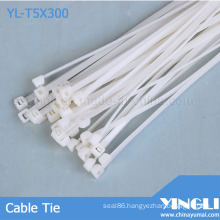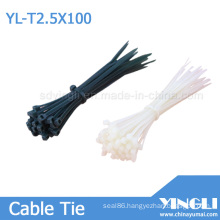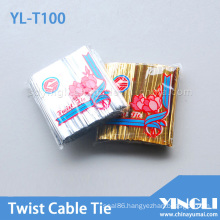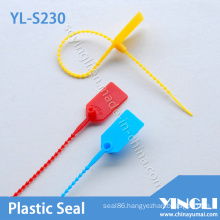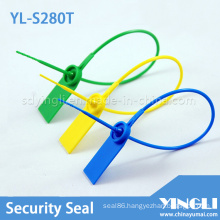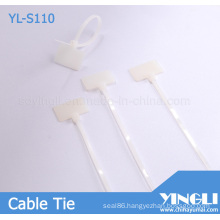Copper and aluminum processing materials excess capacity
2021-04-19
The problem of overcapacity in the copper and aluminum processing industry has caused extensive and sustained attention in recent years. The unabated investment and continuous increase in production capacity have led to a decline in capacity utilization rate and operating rate of enterprises. Some enterprises, especially those that have developed rapidly since the 11th Five-Year Plan period, have large-scale and high-level enterprises. Difficulties, let us together -
Excessive investment increases excess capacity
From 2010 to 2012, during this three-year period, the utilization rate of copper processing materials in China continued to decline from 85.9% to 80.8%, a decrease of 4.4%, of which foils, tubes, strips and rods were respectively Declined by 9%, 6%, 5%, 4%. From a statistical point of view, copper rods and wire rods have a capacity of less than 7 million tons. In all varieties of copper materials, the capacity utilization rate is maintained at 86%, which is relatively high, and the problem of surplus does not seem serious. In fact, the copper wire rod production capacity in China is close to 11 million tons. However, due to the low technical barriers and investment thresholds for this type of products and the large number of small enterprises, their production capacity and output have not reached the standard of “above scale” in statistics, and are not included in the statistics. The actual excess is also very high.
During the three years from 2010 to 2012, the utilization rate of aluminum processing materials in China also fell continuously, from 91% to 86.7%, a decrease of 3.8%, of which profiles, foils and strips fell by 9% respectively. 3%, 1%. The low utilization rate of profile production is not related to the large investment in large-scale extrusion presses and industrial aluminum profiles. In terms of aluminum, although the scale of investment expansion is much larger than that of copper, due to the rapid development of market applications, the capacity utilization rate is higher than that of copper. In 2012, aluminum was 86.7%, while copper is only 80.8%, which indicates that the degree of aluminum excess is not as serious as copper.
If the investment still cannot be effectively controlled, the end of the “Twelfth Five-Year Plan” is still a unavoidable issue. The current situation of the overcapacity of China's copper and aluminum processing materials is getting more and more serious. There are many complicated factors. In summary, it can be summarized as follows:
Investment overheating without effective control. China Nonferrous Metals Industry Association statistics show that during the "Eleventh Five-Year Plan" period, China completed a total of 370.15 billion yuan in non-ferrous metal alloy manufacturing and rolling investment in fixed assets, an average annual increase of 44%. In the first three years of the “Twelfth Five-Year Plan”, the growth momentum remained unchanged. The fixed assets investment was 1575, 2495 and 330.3 billion yuan respectively, with an average increase of 41.6%. The total amount completed in three years was 737.29 billion yuan, which is equivalent to twice the sum of the five years of the "Eleventh Five-Year Plan". The current investment boom is still high.
The relevant data show that there are four main sources of investment in the non-ferrous metal processing industry. First, the industry has developed rapidly over a long period of time. After a certain amount of capital has been accumulated, it will expand its production capacity. After some outstanding enterprises have raised funds through listing, the raised investment funds have flowed to the leading enterprises of the preferred companies. Second, upstream enterprises have extended their development to downstream products. In China, the distinctive geographical characteristics are the development and processing of copper and aluminum smelting enterprises in the Central and Western controlled metal resources provinces and regions, and the development of deep processing. This kind of development is in line with the country’s policy of transforming the mode of economic development and the Central Government’s western development policy. However, at the national level, it is indeed at odds with the current efforts of the non-ferrous metal industry to curb overcapacity of processed products. Third, downstream applications of processed products, such as real estate, construction and decoration, etc., are used to invest in the development of upstream raw materials in order to reduce construction costs. Fourth, other capital involvement.
In the process of transition from a resource-based economy to a deep-processing economy in the central and western regions, there has been no orderly transfer of Eastern non-ferrous metal processing capacity. Formed in the east did not give up or reduce production capacity, including the normal production capacity that was originally sold to the Midwest, and the Midwest had to invest in construction.
The role of government engineering or the project of heads can not be ignored. In the absence of careful feasibility analysis, leaders of some regions have to make billions or even tens of billions worth of industrial production value plates during their tenure of office. Blindly commanding decisions on copper and aluminum processing materials must be on a large scale, involving hundreds of thousands of tons. Even millions of tons. No one has been responsible for the investment results of these projects, hollowed out corporate and local finances, or even settled banks, causing serious financial burdens on companies and increasing the risk of the loss of state-owned assets. As a result, not only is this place unable to make profits through project construction, it has also disrupted the supply and demand relationship in the domestic market.
The copper and aluminum processing industry, especially the copper processing industry, has not made major breakthroughs in market application development research.
Unblocking cooperation with government enterprises
Industrial enterprises are struggling to explore the direction of breakthrough. Resolving the issue of excess capacity has become an urgent task. However, it is impossible to solve the problem of overcapacity and rely on effective action. The current effective action is: Enterprises and the government work together to implement the combination of blocking and blocking.
Businesses are responsible for both "sparse" and "blocking."
First of all, companies should use self-discipline as their own salvation, fulfill their common responsibility for the development of the industry, and consciously shut down backward production capacity, while at the same time no longer adding or expanding general production capacity. Faced with the common problem of overcoaching excess capacity, due to different product performance, market direction and market performance, the two major industries of copper and aluminum processing will choose different routes.
In the current global environment where energy conservation, emission reduction and ecological construction are highly valued, the performance advantages and cost-effectiveness of aluminum metal are extremely prominent, laying a solid foundation for the development of new application areas. Experts predict that aluminum consumption in the world will have a very high growth index in the coming period. Therefore, the main trends in the development of China's aluminum processing industry in the next few years will be the development of new applied research, the development of new markets, and the easing of excess capacity.
Most experts believe that the global growth in aluminum applications will mainly come from the automotive industry. The same is true in China. In 1990, only 50 kg of aluminum was used in European automobiles, 140 kg in 2012, and 180 kg in 2020. In 2030, the index of automotive aluminum production in the whole country will be 70%. At present, the European automotive aluminum sheet [colored business opportunities: 1060 aluminum sheet] has an annual consumption of 450,000 tons, an annual growth index of 25%, and will reach 1.5 million tons in ten years. The American automotive aluminum plate is less than Europe, which is 350,000 tons per year. Ford and other manufacturers announced that aluminum for automotive use in the Americas will soon surpass Europe. The global automotive aluminum (including cast-forged and processed materials) has reached an annual growth rate of 12%. China is not only far below Europe and the United States, but also below the global average. There is a lot of room for development. The rate of aluminum trailers in Europe is 76%, Japan is 90%, and China is zero. China currently has 3 million trailers and trailers, and the aluminum body has a weight of 3.5 tons. If the trailers are fully aluminized, they will theoretically consume 10.5 million tons of aluminum, equivalent to 1/3 of the existing capacity. Various aluminum light vehicles, such as special vehicles for roads and railway transportation, various types of hulls, electric vehicles, and aluminum bicycle parts, all have ample room for development.
On March 16, 2014, the State Council issued the "National New Urbanization Plan." As the construction industry, which is one of the basic industries that will drive China's economic GDP in a period of historical time, its demand for aluminum materials cannot be discounted. In addition to the traditional aluminum doors and windows, aluminum [colored business opportunities: aluminum alloy panels] large roof panels, beams, building templates, scaffolding, etc. have entered the application development. According to another report, in the next decade, the total investment in the construction of skyscrapers in China will exceed 1.7 trillion yuan. If completed, the total number of skyscrapers will reach 1,318, replacing the United States as the world's largest. We leave the problem of not building so many skyscrapers to other experts in the field. We must pay attention to how much and what quality aluminum materials need to be prepared?
As people become more and more aware of the concept of environmental protection, more and more aluminum will be used for life, and this market will also be very broad. For example, foreign countries usually use aluminum lunch boxes instead of disposable plastic snack boxes or paper snack boxes. Although the cost of manufacturing aluminum boxes is higher than that of plastics and papers, it can be recycled for many times. The actual cost is lower, and it is more hygienic and environmentally friendly. Per capita consumption of aluminum foil in Europe is much higher than in China. In the future, aluminum will become more common in human daily life.
Statistics on per capita aluminum consumption in countries in 2012 showed that Germany is 30 kg, Japan is 25 kg, and the United States is 23 kg, while China is only 13 kg. Aluminum has a wide application and development space.
The situation of copper is very different. As a functional material that is conductive to the market and has excellent thermal conductivity, it is far from being able to provide comprehensive advantages and broad market development space as a structural aluminum material. Even if it is mentioned in recent years that there are many white copper tubes for seawater desalination, copper traction wires and support lines for high-speed rail, and special cables including radiated cross-linked cables, it is expected that the total demand will not exceed 200,000 tons during the period. Around, compared with 13 million tons of copper production capacity, is a fraction of a small fraction. Moreover, due to factors such as resource shortage and high prices, many downstream industries are seeking copper alternative materials to reduce product costs. In 2010, the household electrical appliance industry replaced 700,000 tons of air-conditioning copper pipes, equivalent to 8% of the copper processing materials produced that year. At present, some copper-aluminum composite rows and pure aluminum cables can also be developed and produced. Therefore, the characteristics of the copper processing industry's short-term development will be mainly reflected in improving product quality, promoting short-flow process, lowering manufacturing costs, improving product cost-effectiveness, enhancing customer confidence, and maintaining and improving the competitiveness in the traditional market. In general, the copper processing industry is more difficult to deal with excess capacity than aluminum processing.
In a more severe situation, all copper processing companies will have greater responsibility for the health of the industry as a whole. More emphasis should be placed on "no longer adding or expanding general product capacity." Taking copper strip as an example, during the three years from 2010 to 2012, the output increased by only 132,000 tons while the production capacity increased by 359,000 tons. As of the end of 2012, China's copper sheet strip production capacity has reached 3.048 million tons, and the output was only 2.269 million tons. The simple surplus reduction amounted to 777,000 tons, which was equivalent to nearly 6 times the increase in production value in the past three years. It was also reported that there were still About one million "high-precision copper strip" projects are under construction. Therefore, I believe that even if the copper strip project is no longer new in the next 10 years, the existing and ongoing capacity will be sufficient to meet market demand.
The government must make a difference in both "sparse" and "blocking."
In the case of weak investment control and increasing new production capacity, if the backward production capacity is not withdrawn in time, not only the total production capacity will be built up, the production rate will be forced to use, and the disorderly competition will be easily aggravated, which will restrict the investment efficiency and operation of new and more advanced production capacity. The full play of benefits will delay the pace of industrial upgrading.
Non-ferrous metals processing and backward production capacity with poor exit have the following objective factors: First, the current Chinese market as a whole is still a medium and low-end product market, high-end, high-priced products need a long time to cultivate the market; Second, in In the special historical period of transitional transition, where the economic benefits of all walks of life are not very good, downstream industries will, to a certain extent, maintain their enthusiasm for the purchase of raw materials with medium and low prices, and thirdly, unfair competition in the circulation field to reduce manufacturing costs. Boosted low-end products are popular. Only if the purchase price is low enough, all intermediate links will earn money.
In a situation where the backward production capacity is very difficult to withdraw, the government has introduced a strong policy and implemented it with determination to reflect the protection of the healthy development of the industry. At the same time, the performance projects in the industrial construction also strive to be eliminated.
It is hoped that those interested in participating in the copper-aluminum processing industry's local government leaders will conduct in-depth studies on the development of the entire country and even the world's copper-aluminum processing industry. The feasibility, strength and disadvantages of the copper and aluminum processing industry in the region should be carefully studied. Some experts pointed out that metallurgical and metal processing projects have large volumes and high taxes, which easily lead to GDP growth, and local governments are rushing. Some places even directly commanded companies to "double their output this year." Some employers stated that they are very reluctant to increase capital and expand production at the original level of the enterprise, but local government leaders have great pressure on them. If they do not obey, they will be unable to “mix” and “difficult” at the local level. "I had to swallow bitter water in my stomach." This, to a certain extent, reflects the reason why some of the capacity of non-ferrous metal processing materials has been “growth”. In dealing with overcapacity, the mentality of the central government and local governments is inconsistent. Therefore, the Ministry of Industry and Information Technology and other ministries that have taken the lead in resolving overcapacity are facing strong resistance from local governments.
We call on local government leaders at all levels to respect the objective laws of industrial development and avoid making the copper-aluminum processing industry a performance project. However, the response received is not satisfactory. Similar problems still occur from time to time. We found out in the company's research that some local governments ignored the current development of the industry and ignored the existing companies. Based on this, whether or not major investment mistakes caused by leading irresponsible decisions should be included in the case of serious loss of state-owned assets included in the scope of cadres anti-corruption, implementation of the accountability system to eliminate the administrative intervention on the scale of industrial development is debatable.
Inefficient overcapacity intensifies industry transformation difficulties
After a long period of so-called "high-speed development" of China's copper and aluminum processing enterprises, starting from the "Twelfth Five-Year Plan", it shows great inadaptability to the domestic economic environment that changes the mode of economic development. The index of overcapacity in recent years has risen, accelerating them further into profits. Although the profit of processing enterprises in 2013 accounted for a relatively high percentage of total non-ferrous metal industry profits, the profit rate of main business income was only 4%. In 2013, copper and aluminum processing companies realized profits of 28.5 billion yuan and 41.9 billion yuan respectively, which represented a year-on-year increase of 7.4% and 16.6%, respectively. While the output of the same period increased by 25.2% and 24.04% year-on-year, the profit rate of the main business income of processing enterprises continued to decline.
Due to the low efficiency caused by overcapacity, many companies have struggled on the edge of profits and losses, which has exacerbated the difficulty of transformation and upgrading of the entire industry and prolonged the transition period.
On the surface, the economic situation of the entire industry is not very good. However, the actual situation is that big companies are more difficult, state-owned enterprises are more difficult, and new projects are more difficult. In the period when it is necessary to adjust the survival strategy and improve the adaptability of the environment, the small companies can't do it, and the big companies can't. If the private enterprises can do it, the state-owned enterprises can't. Because there are no effective measures to force backward production capacity to withdraw from the market and drive down unregulated competition such as quotations, the new “advanced production capacity” with obviously higher investment costs will be difficult to enter the market to participate in competition. The backward production capacity representative enterprises will live well. Some excellent companies have built high-level production lines, but the products cannot be sold, but they carry a heavy financial burden. In the long run, who will be forced to withdraw? If the answer is advanced production capacity, it is undoubtedly a huge irony and a complete tragedy for China's nonferrous metal processing industry, which is committed to industrial upgrading.
Colored Processing Industry: Establishing a Perfect Exit Mechanism Is the Key
China is the world's largest manufacturing country. In 2012, China produced 19.27 million vehicles, which is almost equal to the sum of the United States (10.5 million) and Japan (9.9 million); in the same year, we also produced 75% of global mobile phones, 87 % of personal computers and 52% of color TVs. As a basic industrial raw material, copper and aluminum processing materials will certainly have many opportunities in the stable demand and rapid development of the manufacturing industry.
As a world-famous factory, our cost advantages in terms of labor and materials are gradually being lost. Why not take this opportunity to try to change the law of living? In fact, despite the overall overcapacity, some high-end copper and aluminum materials processing still rely on imports. The performance advantages of copper and aluminum will give our smart Chinese plenty of room for imagination. Why do they always wait for foreigners to tell us what they have developed and used? “China at the tip of the tongue” shows the infinite imagination and creativity of the people in food processing. Why do we have to peep at foreigners in the processing of copper and aluminum? We may wish to shift our focus from being satisfied with manufacturing only, paying more attention to patents and design. Let other countries like us in the past, constantly speculating and chasing what we are doing? Some companies are fully capable of cultivating their own high-level R&D teams, developing new applications, launching new products, and cultivating new customers. Once its own research and development capabilities have been greatly improved, we can take the initiative to cultivate customers, develop markets and, at the same time, be able to control our own destiny. The author had the privilege of visiting two companies, one was originally a traditional aluminum processing factory and the other was a manufacturer of downstream processed copper products. They had already embarked on the path of developing new products for most of our companies. Maybe you often don't understand their products, but there are many foreigners who are staring at them. The products are almost 100% in the international market.
What we are discussing now is how the industry breaks through difficulties, such as low efficiency due to overcapacity, to improve the current predicament, and gradually embark on the path of sound development. However, from the perspective of long-term development, the relatively advanced production capacity and the relative obsolete production capacity will continue to be eliminated will become the norm for the healthy development of the industry. Over the years, there have been too many undergraduate enrollments, and employment difficulties after graduation have been criticized by society. However, the famous economist Huang Yuchuan said: “The rapid increase in college graduates is reducing the cost of high-quality labor, making China more competitive in a wider range of industries.” This should give us new inspiration. With regard to Lenovo's overcapacity problem, as long as there is an effective mechanism for backward production capacity withdrawal, more advanced production capacity will certainly make the industry more competitive in the long-term development. The GDP growth of the national economy requires investment, and industrial progress and upgrading also require investment. It is said that investment is a double-edged sword, that is to say, investment in creating advanced production capacity has boosted excess production capacity. The withdrawal of backward productivity is far more difficult than the entry of advanced productive forces. Therefore, the voice of criticism and complaints all point to investment. In fact, the exit mechanism is the most crucial.
When formulating an exit mechanism, it is critical to define backward production capacity. With the steady development of the entire social economy, the market's demand for product quality continues to increase; and in order to ease energy shortages and improve the quality of the environment, the country has also made stringent requirements in terms of energy consumption and environmental protection. The competent industrial department can formulate relevant industrial policies to meet the market and national industrial development needs, upgrade the production standards of advanced manufacturing industries, and give an effective timetable to force backward production capacity to quit. In the past, we always stressed that backward production capacity withdrawal is a market behavior, but from the perspective of the maturity level of the Chinese market economy today, this is very one-sided. In the current China, without the government's coercive measures, it is impossible to withdraw from backward production capacity. The overcapacity gave us the survival crisis caused by the hard work of more than 60 years of development. We can no longer tolerate turning a blind eye.
It is gratifying that the newly-developed "Aluminium industry regulatory conditions" (excluding aluminum processing), for bauxite, alumina, electrolytic aluminum and recycled aluminum enterprises, scale, product quality, process equipment, energy consumption, environmental protection , safety production and social responsibility, etc., have made detailed specifications and regulations. Not long ago, after review by experts, a group of companies that met the standards were publicized. The preparation of "standard conditions" for copper and aluminum processing should be incorporated into the work schedule as soon as possible. Of course, it is not enough to merely formulate and promulgate the Industry's "Regulatory Conditions", and it will be possible to implement it with resolute and forceful execution before controlling the expansion of production capacity and withdrawing production capacity.
In addition, for the process of developing from the resource-based economy to the processing economy in the central and western regions, the conditions for research and development of high-tech and new products are insufficient, and it is impossible to form a new economic growth point for the industry. Instead, it may increase the current situation of overcapacity of general products. The government can issue corresponding policies and measures as soon as possible to implement the orderly transfer of nonferrous metal processing capacity from the east to the central and western regions. It is about the processing capacity of some of the copper and aluminum processing capacity of the former eastern enterprises facing the central and western regions, including technology, production management, and markets. The bundles will be transferred to the central and western regions. Considering the development needs of the central and western regions in the next 10 to 15 years, it will be scientific and reasonable. Industrial development planning. The increase in the central and western regions should not be too high and greater than the reduction in the eastern region, so that the pressure on excess production capacity can be contained or mitigated at the national level.
In short, we hope that various departments of the central government can see the difficulties encountered by the non-ferrous metal industry in the process of transformation and upgrading and continue to introduce relevant policies and measures to create a favorable environment for the non-ferrous metals processing industry to emerge from the predicament and embark on a healthy and stable development path. surroundings.
Local governments at all levels must conscientiously perform their duties.
At present, China’s economy is undergoing deep-level adjustments, and the global economy is also facing deep-level adjustments. The domestic and foreign markets are full of variables. It is normal for companies to encounter different degrees of difficulties due to different product structures and other factors. We should be brave enough to go upstream. We believe that the economic structural adjustment brought us not only impact and resistance, but also contains rare opportunities for development. The dream of a strong nation in the non-ferrous metal processing industry will surely be realized through continuous reforms!
Aluminum cable strip coil manufacturer, standard width 500-1750mm, can provide special size. Thickness from 0.2mm to 10mm or higher. Aluminum alloy code can be 1050, 1060, 1070, 1100, 1235, 3003,3105, 4343, 5052, 5059, 5182, 5454, 5083, 6082, 6182, 8006, 8011 etc. Temper O,H18,H24. The aluminum strip coil roll which we produced for many application like construction, electronics, automotive, pharmaceutical, food packing, manufacturing, transportation, and so on.
Thin Aluminium Strip, Aluminum Cable Strip, Aluminium Strip Price, Aluminum Strip roll, aluminum strip coil
GCSEAL Co., Ltd. http://www.szaluminumtube.com

